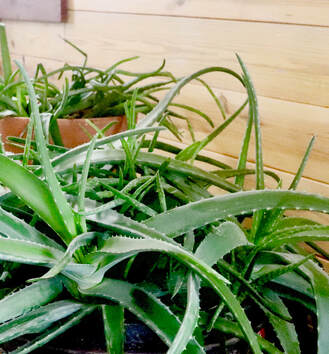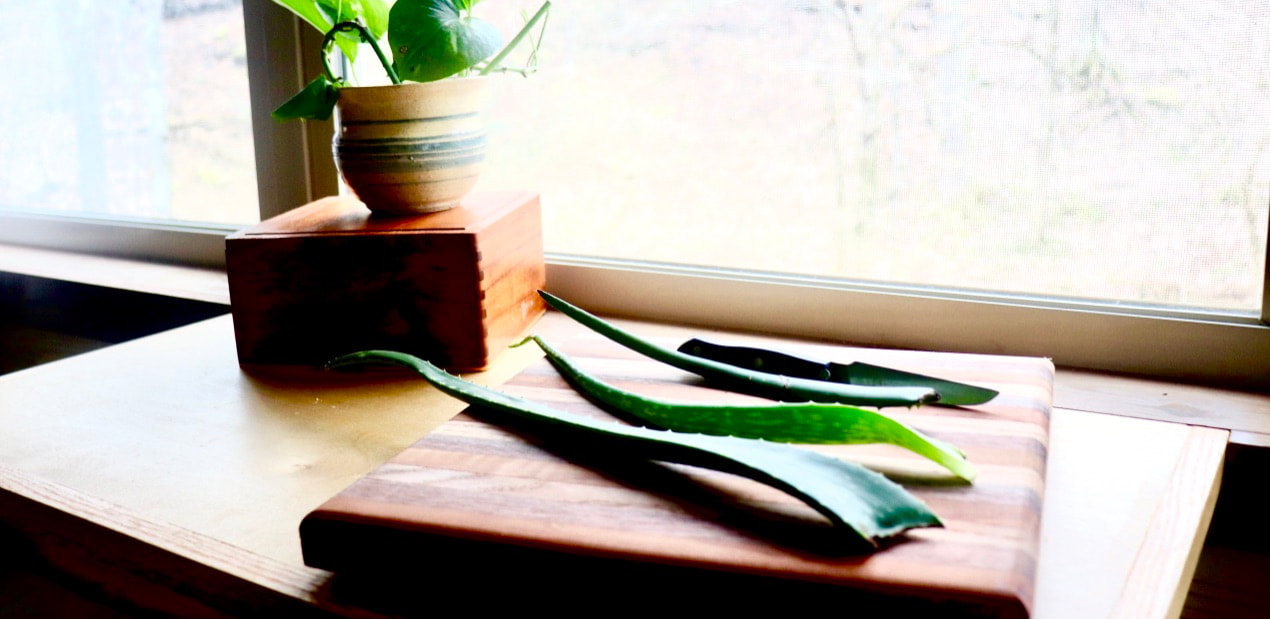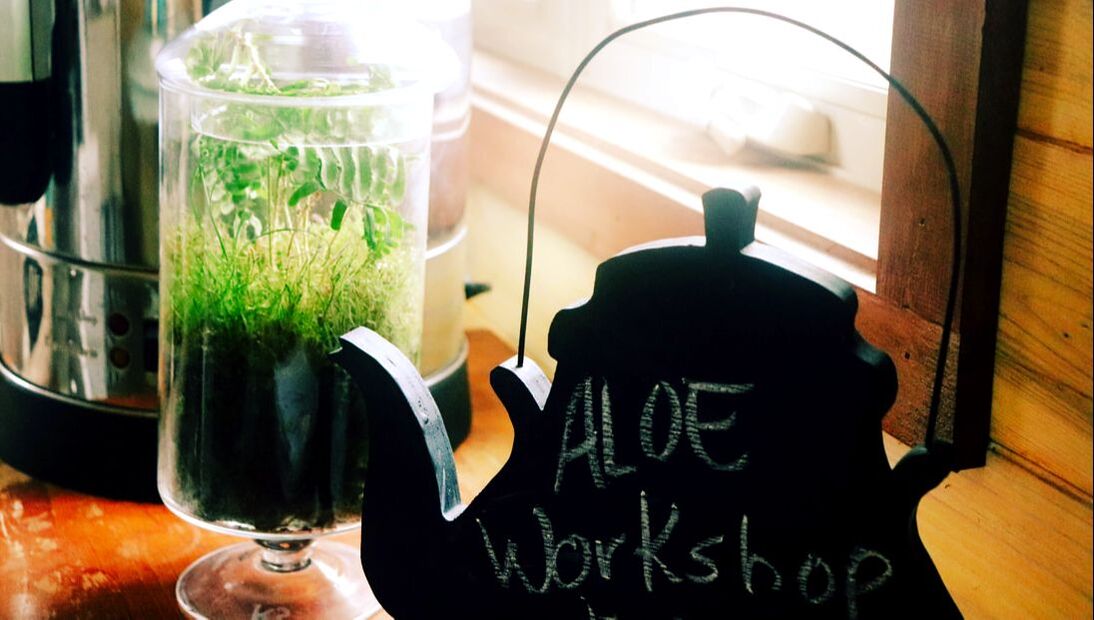|
One of the oldest recorded medicinal herbs with a fascinating history, Aloe vera has been long prized for its topical healing benefits. Legend claims that Alexander the Great once attacked an island kingdom to acquire the wound-healing aloe plants, Cleopatra was reported to use aloe daily to preserve her fabled beauty, and now this powerful little succulent grows on many a kitchen windowsill. It is best known for the cooling gel inside the leaves that quickly soothes minor burns. But aloe’s healing abilities extend well beyond just burns.  The fresh gel is cooling and reduces swelling and inflammation, eases pain, soothes itching, speeds the healing of wounds, and helps prevent scarring. As it dries, the gel forms a natural bandage that protects broken skin while its antibacterial properties prevent infection. Aloe is also an astringent and demulcent herb that nourishes, moisturizes, and strengthens the skin, making it the perfect herb to add to lotions, shampoos, face masks, or any homemade skin care products. While aloe is considered a tropical plant, and is not winter hardy in zones 7 and colder, it does survive very happily indoors through the winter months, and thrives in partial sun outside in the summer. Try to find an aloe plant that is a shoot from a plant already acclimated to your climate, these shoots will be much hardier and grow more quickly than plants that have been transplanted from a different zone. Aloe likes to be planted in pots of slightly sandy soil and needs moderate watering. When temperatures begin to regularly drop below 50oF in the Autumn, bring your plan indoors and place it by a sunny window through the winter. It is best to set the plant outside in the sun for only a few hours at a time on early spring days to gradually re-acclimate it to the sun, otherwise the leaves have a tendency to sunburn. An aloe plant can be safely returned to its outdoor home when temperatures are consistently above 50oF in the Spring. So next time you run into poison ivy in the woods, or end up with a few cuts and scrapes after hunting for blackberries, or sunburn on a warm summer day, reach for the aloe plant that is growing on your window sill, and enjoy its healing properties. Comments are closed.
|
Do You Have a
|



